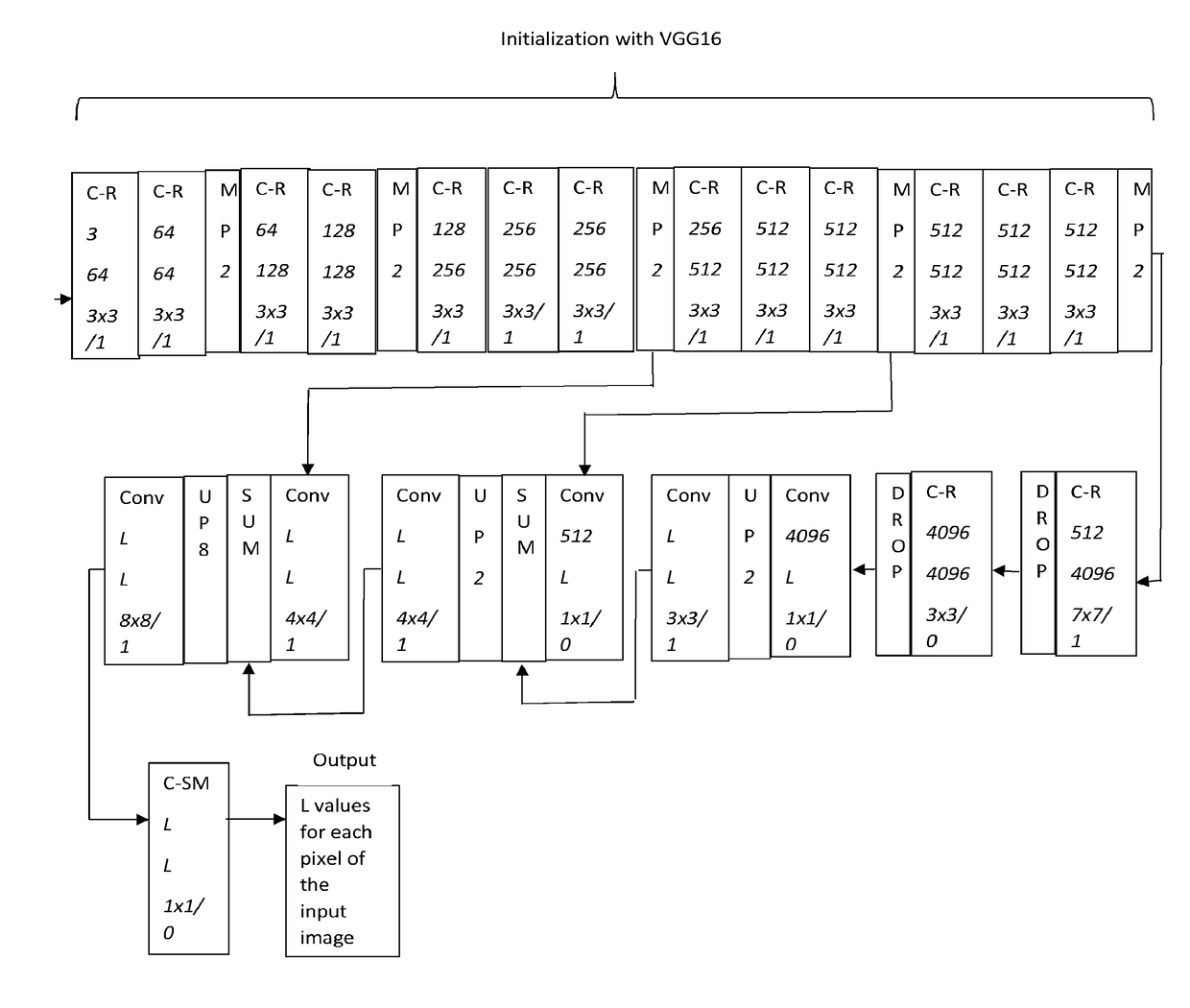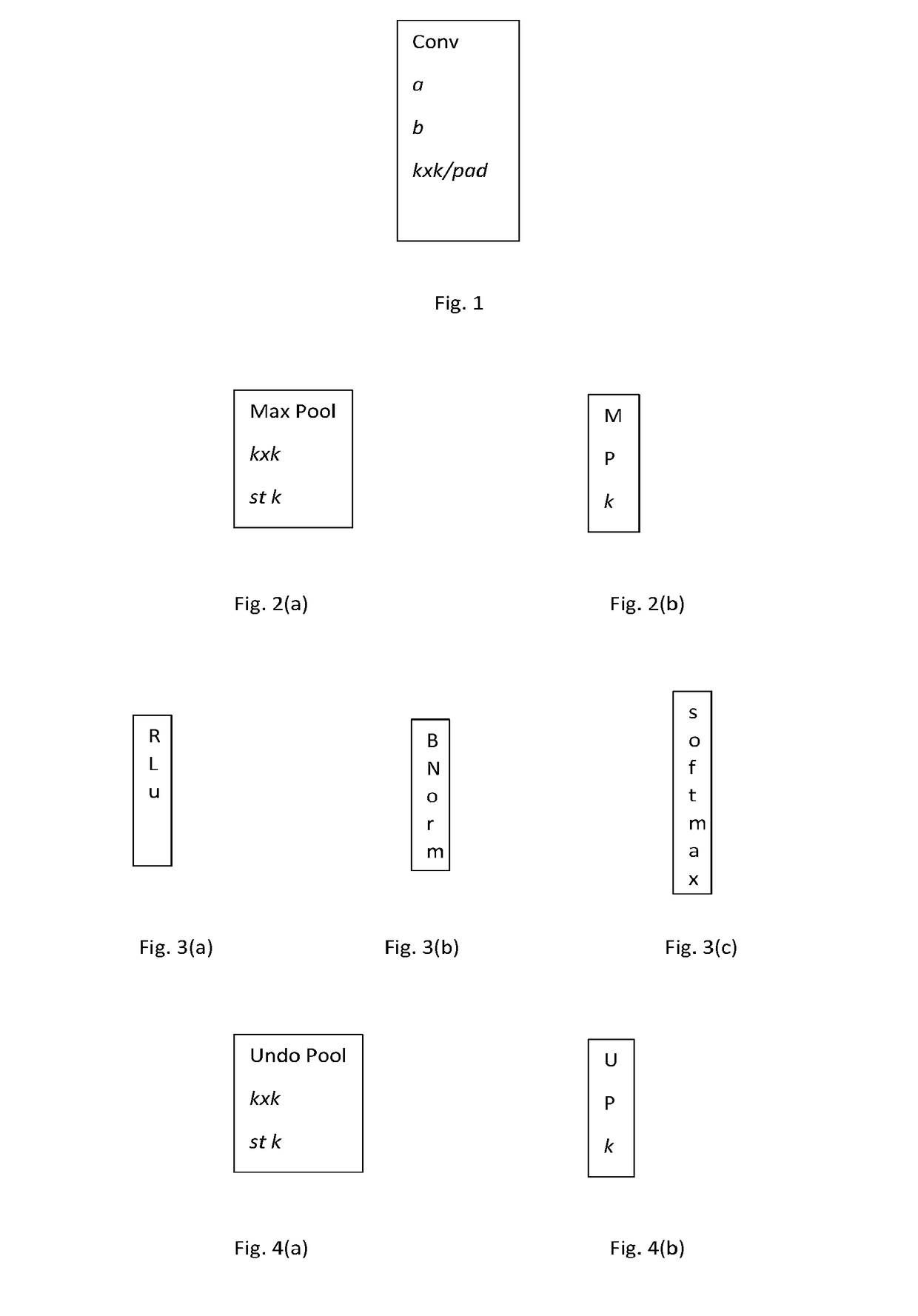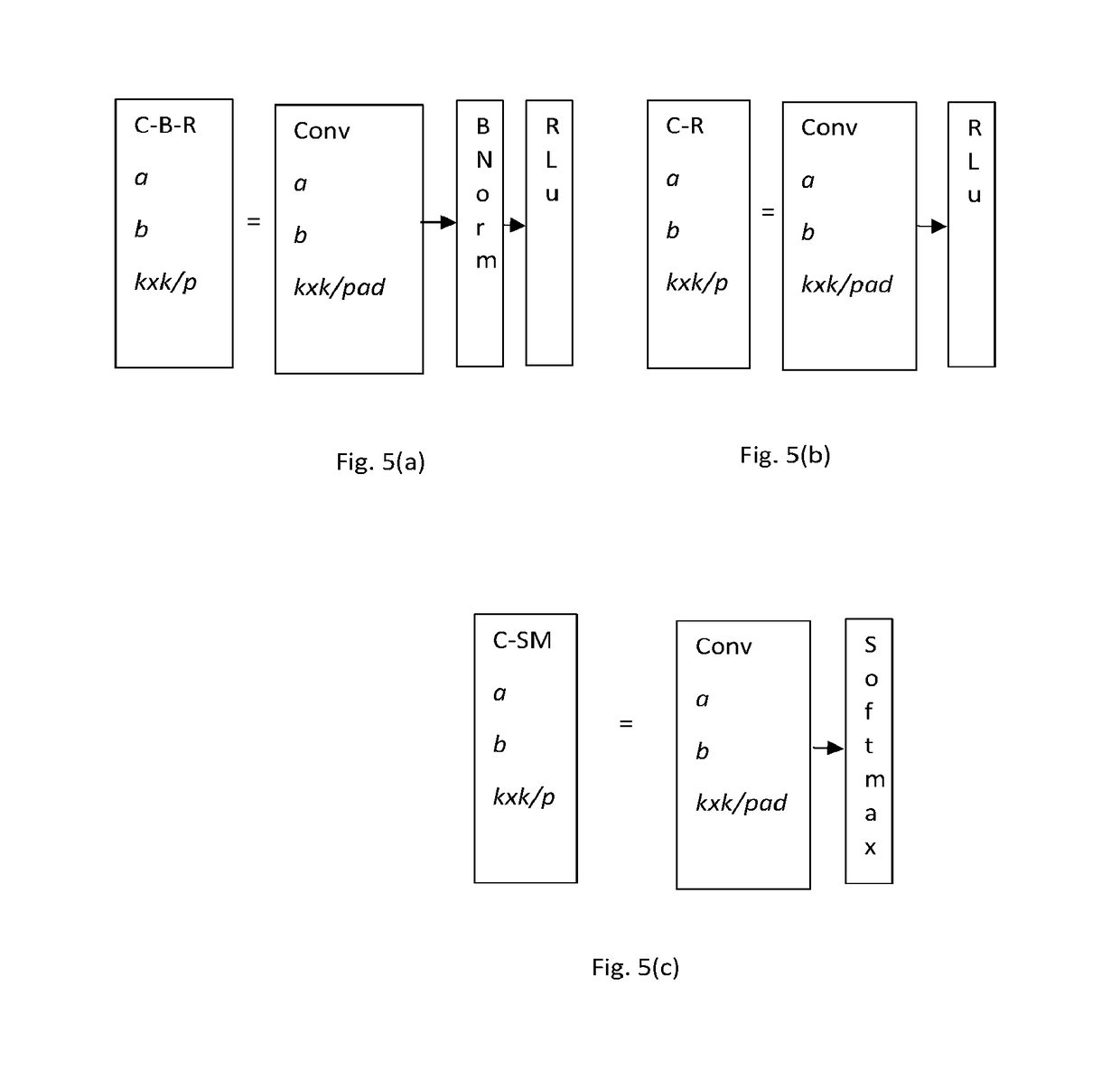Training constrained deconvolutional networks for road scene semantic segmentation
a constrained deconvolution and semantic segmentation technology, applied in image enhancement, process and machine control, instruments, etc., can solve the problems of small size of fast-access on-chip sram memory, inefficient memory footprint, and limited application of state-of-the-art dns in practi
- Summary
- Abstract
- Description
- Claims
- Application Information
AI Technical Summary
Benefits of technology
Problems solved by technology
Method used
Image
Examples
Embodiment Construction
[0037]In general terms the invention proposes that a source deconvolutional network (here referred to also as S-Net) is adaptively trained to perform semantic segmentation. The training process uses training data comprising image data encoding training images and annotation data labelling corresponding areas of the training images. The areas are preferably individual pixels of the training images, although they might alternatively be “super-pixels” or other structures instead of individual pixels. The annotation data specifies one of a number of a predetermined set of object categories, and indicates that the corresponding area of the image is an image of an object which is in the object category specified by the annotation data.
[0038]The S-Net is trained substantially without constraints on its size (or at any rate, without being constrained by the memory limitations of current fast-access on-chip SRAM memories).
[0039]Training images are input to the S-Net (some or all of which may...
PUM
 Login to View More
Login to View More Abstract
Description
Claims
Application Information
 Login to View More
Login to View More - R&D
- Intellectual Property
- Life Sciences
- Materials
- Tech Scout
- Unparalleled Data Quality
- Higher Quality Content
- 60% Fewer Hallucinations
Browse by: Latest US Patents, China's latest patents, Technical Efficacy Thesaurus, Application Domain, Technology Topic, Popular Technical Reports.
© 2025 PatSnap. All rights reserved.Legal|Privacy policy|Modern Slavery Act Transparency Statement|Sitemap|About US| Contact US: help@patsnap.com



